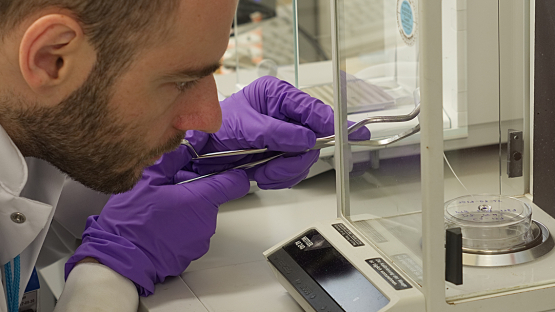This year’s World Environment Day calls for a ‘Time for Nature’. Indeed, it is time to understand the messages that nature is sending through the millions of tiny changes that are beginning to cause major shifts in global ecosystems. The IAEA and its partners have the nuclear tools that have been measuring these changes at the most precise levels for over 50 years. These datasets and reference materials, which have been accumulated by thousands of scientists in hundreds of laboratories, are now fully available online to the public and policy makers with the aim to develop effective conservation policies.
Laboratories around the world can be assured of their performance and degree of accuracy by comparing their results directly with known standard reference materials that have been carefully measured and quantified. This is why easy access to reference standards is essential for quantitatively and fairly assessing a laboratory’s proficiency.
Since the early 1960s, the IAEA has developed and made available a large suite of reference materials for laboratories worldwide to assist them in quality assurance of the results they obtain using nuclear analytical techniques. These reference products pertain to reliable and accurate results in studies of environmental radionuclides, stable isotopes, trace elements and organic contaminants.
They are available at the newly upgraded IAEA Reference Products for Environment and Trade website, which offers enhanced repository data, improved search capacity and an online system for purchasing certified reference materials.
“The modernized website is easy to navigate through a comprehensive range of reference products available for our external customers, helping to improve and maintain their analytical excellence,” said Manfred Groening, Head of the IAEA’s Terrestrial Environment Laboratory.
A wide range of organic substances obtained from products such as rice, fish and oyster powder, grass and spruce needles, moss, cellulose, ancient and modern wood, soil and marine sediment, seawater, distilled water, powdered rock materials such as obsidian, carbonates, and pure chemicals and gases are processed at the IAEA Environment Laboratories under strictly controlled conditions. They serve as reference materials for scientific needs to help laboratories investigate and protect the environment.
“Regular participation in IAEA proficiency tests and access to reference materials for measurements of radionuclides in the environment is very important to us,” said Hamid Marah, Scientific Director of CNESTEN, the Moroccan National Center for Nuclear energy, Sciences and Techniques. “This access helps our research centre to demonstrate its analytical excellency and supports all our activities to ensure the well-being of the public.”
Over 90 different reference materials characterized for radionuclides, stable isotopes, trace elements and organic contaminants have been made available to the scientific community. Altogether more than 2000 individual units of these materials are distributed to over 600 laboratories per year. In addition, 700 laboratories benefit annually from quality assurance services by receiving several thousand similar dedicated samples through IAEA proficiency tests free of charge, largely handled through this website.
“The IAEA is the world's largest supplier of matrix reference materials for radionuclides. Some of these reference products, for example those characterized for stable isotope ratios, are at the highest metrological level as international measurements standards,” said Groening.
The upgraded website will provide enhanced access to this library of reference materials so that laboratories worldwide can purchase specialized reference materials from the IAEA through a more user-friendly system and can also register for accompanying proficiency tests. Annually, more than 1000 laboratories in over 70 countries are making use of the registered services that are available through this dedicated website.





